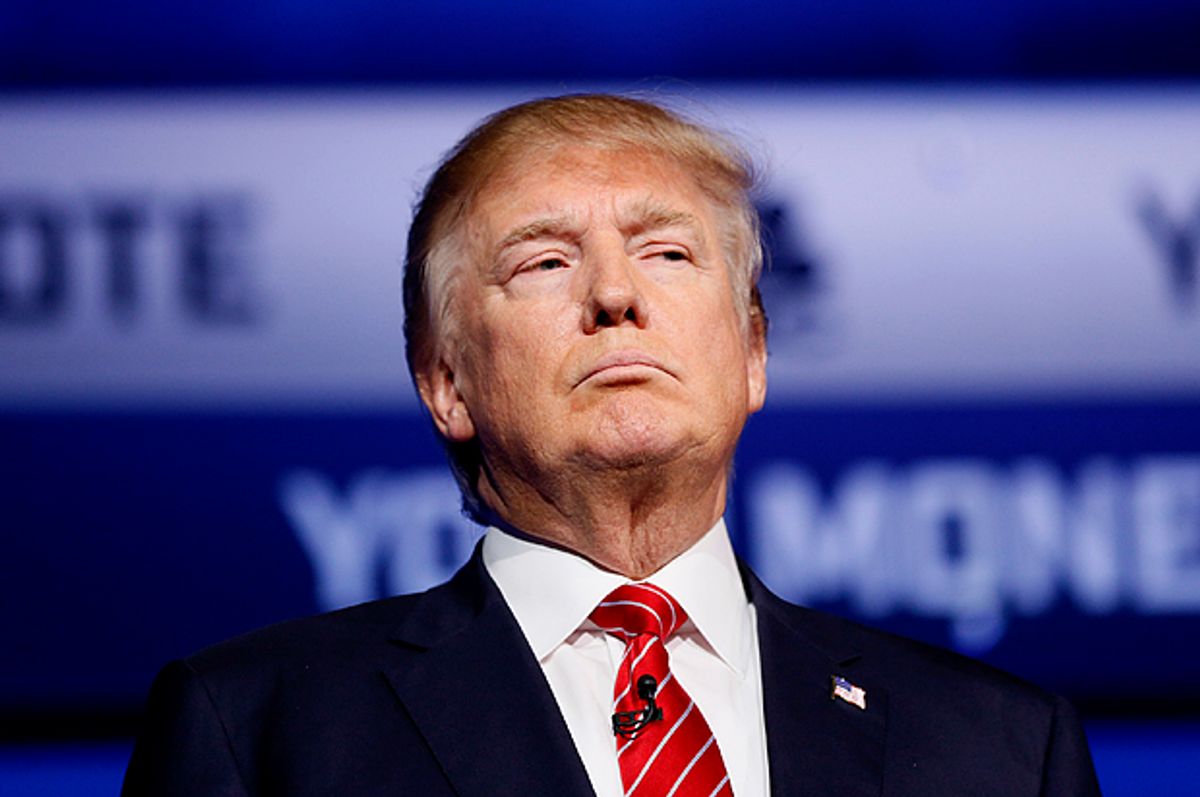 The Trump phenomenon – whereby the real estate mogul and reality TV star has been the frontrunner in the Republican presidential race, bested only recently in polling by Ben Carson – has taken the political class by storm. Trump's combination of nativism and economic populism is a sort of politics that hasn't been tested in presidential politics for some time, but it does have a predecessor.
The Trump phenomenon – whereby the real estate mogul and reality TV star has been the frontrunner in the Republican presidential race, bested only recently in polling by Ben Carson – has taken the political class by storm. Trump's combination of nativism and economic populism is a sort of politics that hasn't been tested in presidential politics for some time, but it does have a predecessor.
In The National Journal, John B. Judis reviews the history of a group the sociologist Donald Warren in 1976 dubbed Middle American Radicals, or MARS. The MARS voters were white citizens who were middle-income or lower-middle-income but not poor, not college-educated, and who were in skilled or semi-skilled jobs. Warren estimated that these voters composed a quarter of the electorate, and their politics didn't fit the neat categories of liberal or conservative voters.
Rather, they saw “government as favoring both the rich and the poor simultaneously” – railing against both Big Business and what they viewed as handouts for low-income people. However, they were strongly supportive of federal social insurance programs such as Social Security and Medicare, believing these programs to be beneficial for the broader middle class.
It's no surprise, then, that Trump has stepped into the same role played by other right-wing populists. Judis cites Trump's refusal to cut Social Security and his touting of infrastructure plans to draw an analogy to Alabama Dixiecrat George Wallace, who both resisted integration but wanted to make the tax system more progressive while expanding Social Security.
Today, Trump's rallies are likely the only ones in America where you will both see a pledge to build a massive wall separating the United States and Mexico and a pledge to rebuild American infrastructure.
Before Trump, the candidate who most closely courted the MARS voter was Pat Buchanan. In that campaign, Buchanan railed against the North American Free Trade Agreement and World Trade Organization, saying they were set up for the “multinational corporations and financial elite”; note that trade and currency policy are major features of Trump's campaign today, with frequent criticism of the Trans-Pacific Partnership and our trade relationship with China a staple of his stump speeches.
The question is, can a candidate for the MARS voter actually win? After all, George Wallace, Pat Buchanan, and others riled up a constituency but failed to be elected. Judis predicts that the “size of the MARS role going forward will ultimately depend on whether Americans believe their nation is in decline and whether they think that the politicians in Washington are capable of, or even interested in, reversing that decline.” In other words, the more the political system fails to ease middle class anxieties, the more Trump gains.



Shares